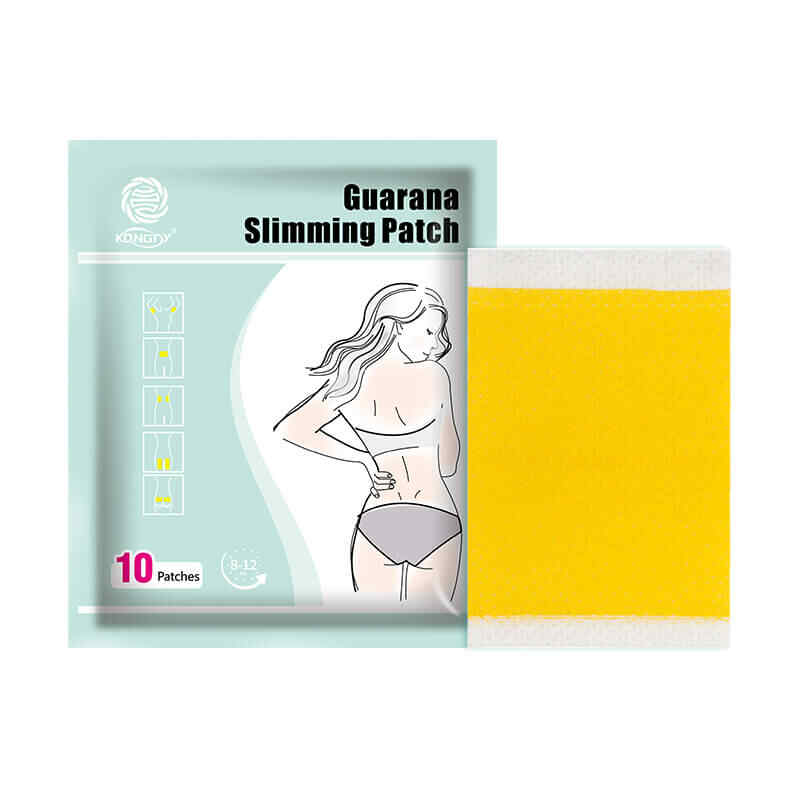The Importance of Quality Control in Transdermal Slimming Patches OEM Manufacturing
In the fast-growing wellness and weight management market, transdermal slimming patches have become a popular alternative to pills and supplements. They provide convenience, targeted delivery, and steady absorption of active ingredients through the skin. For businesses entering this competitive space, choosing a reliable transdermal slimming patches OEM partner is essential. However, one factor often overlooked is quality control. Without strict and consistent quality assurance, even the best product ideas can fail in the market.
This article explores why quality control in transdermal slimming patches OEM manufacturing is critical, what standards a reliable transdermal slimming patches Manufacturer should follow, and how businesses can benefit by ensuring their supplier has robust systems in place.

Why Quality Control Matters in Transdermal Slimming Patches
The effectiveness and safety of transdermal slimming patches depend on precise formulation and production. Unlike simple consumer products, slimming patches directly interact with the skin, making poor quality a potential health risk.
Here’s why quality control cannot be compromised:
Consistency of Active Ingredients
Each patch must contain the right concentration of herbs, plant extracts, or weight-loss compounds.
Variations in dosage can lead to inconsistent results, damaging consumer trust.
Skin Safety
Allergic reactions and irritation can occur if inferior materials are used.
High-quality transdermal slimming patches Manufacturers test adhesives, backing layers, and release liners for skin compatibility.
Product Performance
Adhesion is critical: patches must stick securely without causing discomfort.
Controlled release technology ensures that active ingredients are delivered over time.
Regulatory Compliance
Health authorities worldwide, from the FDA to the EU’s EMA, have strict requirements for nutraceutical and cosmetic patches.
Quality control ensures compliance with Good Manufacturing Practices (GMP) and ISO standards.
Brand Reputation
Inconsistent or unsafe products can lead to recalls, bad reviews, and loss of trust.
Partnering with a quality-focused transdermal slimming patches Supplier helps protect your brand.
Key Elements of Quality Control in OEM Manufacturing
To ensure that your slimming patches meet global standards, a reliable transdermal slimming patches OEM partner must adopt a multi-layered quality control system.
1. Raw Material Testing
All herbal extracts, adhesives, and film materials must be tested for purity and safety.
A professional transdermal slimming patches Manufacturer often requires certificates of analysis (COA) from raw material suppliers.
2. Standardized Formulation
Custom transdermal slimming patches require precise formulation control.
OEM facilities use advanced equipment to guarantee that every batch meets identical standards.
3. In-Process Quality Checks
Sampling at different production stages ensures that no contamination or irregularity occurs.
Parameters like thickness, weight, and ingredient distribution are tested in real-time.
4. Finished Product Testing
Patches undergo stability tests, adhesion performance checks, and safety evaluations.
Private Label transdermal slimming patches buyers should request test reports before launch.
5. Packaging and Labeling Accuracy
Incorrect labeling can cause regulatory issues and consumer confusion.
A professional transdermal slimming patches Supplier ensures that dosage, instructions, and warnings are clearly printed.
The Role of Certifications in Quality Assurance
When evaluating a transdermal slimming patches Manufacturer, certifications are a strong indicator of reliability. Look for:
GMP (Good Manufacturing Practice): Ensures strict hygiene and process controls.
ISO 9001: Demonstrates robust quality management systems.
ISO 13485: For medical-related devices, including transdermal patches.
Dermatological Safety Testing Reports: Confirms the product is safe for skin use.
These certifications are not just “nice to have”—they demonstrate that the OEM partner is capable of producing safe, compliant, and effective slimming patches.
Benefits of Partnering with a Quality-Focused Manufacturer
Working with a reliable transdermal slimming patches Supplier that prioritizes quality control offers businesses multiple advantages:
Reduced Risk of Product Recalls
Strong testing protocols minimize the chance of defects.
Improved Consumer Confidence
Customers are more likely to trust brands that deliver consistent quality.
Stronger Market Position
Quality-certified Private Label transdermal slimming patches can stand out in competitive markets.
Long-Term Business Growth
Building a brand around quality leads to sustainable success.
Choosing the Right Transdermal Slimming Patches OEM Partner
When selecting an OEM partner, businesses should evaluate:
Manufacturing Facilities: Are they modern, clean, and certified?
Testing Capabilities: Do they conduct raw material and finished product testing in-house?
Customization Options: Can they deliver both Custom transdermal slimming patches and Private Label transdermal slimming patches with the same level of quality control?
Track Record: Does the transdermal slimming patches Manufacturer have experience with international markets?
Client Support: Does the transdermal slimming patches Supplier provide documentation, certificates, and compliance reports?
Conclusion
In the slimming patch industry, product quality is directly linked to business reputation and customer satisfaction. That’s why quality control in transdermal slimming patches OEM manufacturing is not optional—it is a necessity.
By choosing a reliable and certified transdermal slimming patches Manufacturer or Supplier, businesses can ensure product safety, regulatory compliance, and consumer trust. Whether you are developing Custom transdermal slimming patches or launching Private Label transdermal slimming patches, your success depends on partnering with an OEM that values precision, consistency, and quality.
Related Questions and Answers
Q1: Why is quality control important in transdermal slimming patches OEM?
A1: Quality control ensures consistency, safety, and regulatory compliance, which protects your brand and boosts consumer trust.
Q2: How do I know if a transdermal slimming patches Manufacturer is reliable?
A2: Look for GMP, ISO certifications, dermatological safety testing, and transparent quality assurance systems.
Q3: Can Private Label transdermal slimming patches maintain high quality?
A3: Yes. With a certified transdermal slimming patches Supplier, Private Label products can match the quality of Custom formulations.
Q4: What’s the difference between Custom and Private Label transdermal slimming patches in terms of quality?
A4: Both can be high quality if manufactured under strict quality control. The main difference lies in formulation flexibility and branding options.
Q5: How does quality control benefit my brand long-term?
A5: It reduces risks, strengthens customer loyalty, and ensures your brand can scale sustainably in competitive markets.






